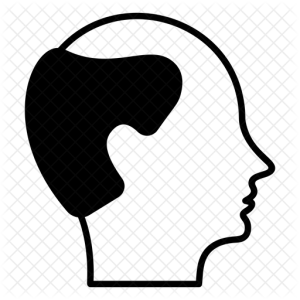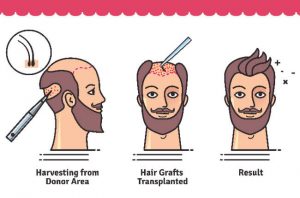Hair Transplant in Pakistan
Hair transplantation is a surgical technique that moves individual hair follicles from a part of the body called the ‘donor site’ to a bald or balding part of the body known as the ‘recipient site’. It is primarily used to treat male pattern baldness. In this condition, grafts containing hair follicles that are genetically resistant to balding are transplanted to the bald scalp. It is also used to restore eyelashes, eyebrows, beard hair, chest hair, and pubic hair and to fill in scars caused by accidents or surgery such as face-lifts and previous hair transplants. Hair transplantation differs from skin grafting in that grafts contain almost all of the epidermis and dermis surrounding the hair follicle, and many tiny grafts are transplanted rather than a single strip of skin.
Since hair naturally grows in follicles that contain groupings of 1 to 4 hairs, today’s most advanced techniques transplant this naturally occurring 1 – 4 hair “follicular units” in their natural groupings. Thus modern hair transplantation can achieve a natural appearance by mimicking natural hair for hair. This hair transplant procedure is called Follicular Unit Transplantation (FUT). Donor hair can be harvested in two different ways.
Hair Transplant in Lahore
Hair Transplant in Lahore is extremely in demand due to potential seekers’ growing interest. There are some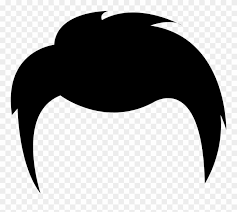
 core reasons that the old and experienced Hair Transplant surgeon doctors are available. Clinics for Hair Transplant; in Lahore are not only well equipped with the latest tools but also skilled doctors ready to serve. We at Hair Transplant in Lahore offer our best-experienced services among others where you’ll get excellent results without loss of hair grafts and find the natural shape of your choice.
core reasons that the old and experienced Hair Transplant surgeon doctors are available. Clinics for Hair Transplant; in Lahore are not only well equipped with the latest tools but also skilled doctors ready to serve. We at Hair Transplant in Lahore offer our best-experienced services among others where you’ll get excellent results without loss of hair grafts and find the natural shape of your choice.
FUE Hair Transplant in Pakistan Cost
In the Pakistani community, both males and females are facing hair loss problems. FUE hair transplant is the latest and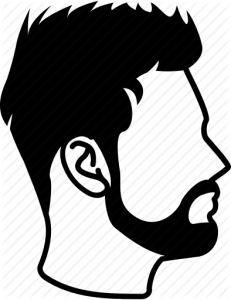
 most popular method of hair transplant. people who can afford FUE hair transplants especially visit different countries to solve hair loss issues. fue hair transplant cost is too high in abroad. But Now people can have fue hair transplants in Lahore, Islamabad Pakistan from hairtransplant.pk platform. fue hair transplant in Pakistan cost is less than in other countries like USA, Canada, France, and Australia. In Pakistan hair transplant costs are based on several follicles and consultants especially if you are hiring for hair loss treatment. you can get some of the detailed and best information from Fue hair transplant and cost from here.
most popular method of hair transplant. people who can afford FUE hair transplants especially visit different countries to solve hair loss issues. fue hair transplant cost is too high in abroad. But Now people can have fue hair transplants in Lahore, Islamabad Pakistan from hairtransplant.pk platform. fue hair transplant in Pakistan cost is less than in other countries like USA, Canada, France, and Australia. In Pakistan hair transplant costs are based on several follicles and consultants especially if you are hiring for hair loss treatment. you can get some of the detailed and best information from Fue hair transplant and cost from here.
Laser Hair Transplant in Pakistan Cost
 Laser hair treatment is quite a different topic to restoring hair for the hair restoration community. Many people are interested in obtaining information and consulting doctors about laser hair transplants and their cost especially. Laser hair transplant costs are too high if we compare different countrie
Laser hair treatment is quite a different topic to restoring hair for the hair restoration community. Many people are interested in obtaining information and consulting doctors about laser hair transplants and their cost especially. Laser hair transplant costs are too high if we compare different countrie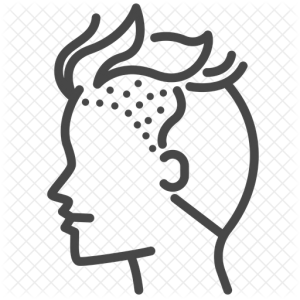 s like the USA, Canada, France, and Australia as compared to Pakistan. In Pakistan, only a few doctors are using the laser hair transplant, especially in Lahore, Pakistan. Laser light encourages the protein synthesis needed for hair regeneration, and also stimulates blood flow to the area for better growth. The laser method is recommended for men by specialists. Laser hair transplant in Pakistan costs based on a year package and one session in Pakistan costs approximately 10,000 to 15,000 approximately. But we can recommend you get detailed information and discussion from hairtransplant.pk for laser hair transplant in Pakistan cost.
s like the USA, Canada, France, and Australia as compared to Pakistan. In Pakistan, only a few doctors are using the laser hair transplant, especially in Lahore, Pakistan. Laser light encourages the protein synthesis needed for hair regeneration, and also stimulates blood flow to the area for better growth. The laser method is recommended for men by specialists. Laser hair transplant in Pakistan costs based on a year package and one session in Pakistan costs approximately 10,000 to 15,000 approximately. But we can recommend you get detailed information and discussion from hairtransplant.pk for laser hair transplant in Pakistan cost.
Cheap Hair Transplant in Pakistan
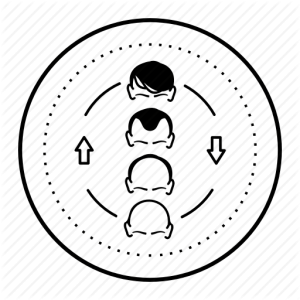 Its general philosophy of People first think about cheap hair transplants in Pakistan. The cost of a hair transplant depends upon the method of hair transplant that we are choosing to solve the hair transplant problem and secondly how much you are affected by hair loss. cheap hair transplant in Pakistan is available on hairtransplant.pk platform.
Its general philosophy of People first think about cheap hair transplants in Pakistan. The cost of a hair transplant depends upon the method of hair transplant that we are choosing to solve the hair transplant problem and secondly how much you are affected by hair loss. cheap hair transplant in Pakistan is available on hairtransplant.pk platform.
Non-Surgical Hair Transplant in Pakistan
Non-surgical hair transplant in Pakistan can be a wonderful option for those wh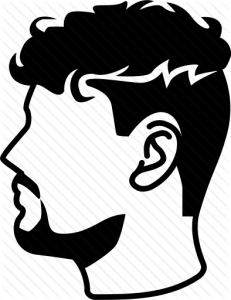 o suffering from significant hair loss and would like to regain the appearance of having a full head of hair without surgery. While few natural hairpieces are being made today, most hair loss consumers have no clue what to look for when purchasing a hairpiece.it is also called hair system toupees. they require a hair base system which requires two types depending upon our selection one is a mesh fabric and the second is polymers. Mesh fabrics are typically made of polyester or nylon and are usually used to create the fine hairline. In some cases, they are used throughout the entire system, which provides an incredibly natural, life-like appearance but is impractical for long-term use. Second Polymers ar
o suffering from significant hair loss and would like to regain the appearance of having a full head of hair without surgery. While few natural hairpieces are being made today, most hair loss consumers have no clue what to look for when purchasing a hairpiece.it is also called hair system toupees. they require a hair base system which requires two types depending upon our selection one is a mesh fabric and the second is polymers. Mesh fabrics are typically made of polyester or nylon and are usually used to create the fine hairline. In some cases, they are used throughout the entire system, which provides an incredibly natural, life-like appearance but is impractical for long-term use. Second Polymers ar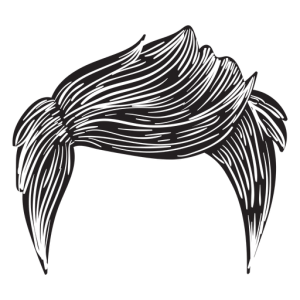 e made of either silicone or polyurethane. Mesh fabrics are typically made of polyester and are usually used to create the fine hairline of a good product. But for Nonsurgical hair transplant is best suited to people who are in cold areas. we recommend you get the full details of nonsurgical hair transplants in Pakistan by clicking here.
e made of either silicone or polyurethane. Mesh fabrics are typically made of polyester and are usually used to create the fine hairline of a good product. But for Nonsurgical hair transplant is best suited to people who are in cold areas. we recommend you get the full details of nonsurgical hair transplants in Pakistan by clicking here.
Artificial Hair Transplant in Pakistan
There are many different methods of hair transplant in Pakistan including surgical, nonsurgical, FUE, and  many others. There are quite sensible surgeons available in Pakistan to deal with hair transplants in Pakistan. Artificial hair transplant in Pakistan has more side effects as compared to other methods of hair transplant. But for Artificial hair transplants in Pakistan doctors first provide Patients its high risks Allergic to synthetic material, Allergic to local anesthesia, Diseases of the immune system, Ongoing scalp infection, Dis metabolic diseases. Despite all the things the hair loss community people finding and taking reviews for Artificial hair transplants in Pakistan. you can get the details of Artificial hair transplants in Pakistan by clicking here.
many others. There are quite sensible surgeons available in Pakistan to deal with hair transplants in Pakistan. Artificial hair transplant in Pakistan has more side effects as compared to other methods of hair transplant. But for Artificial hair transplants in Pakistan doctors first provide Patients its high risks Allergic to synthetic material, Allergic to local anesthesia, Diseases of the immune system, Ongoing scalp infection, Dis metabolic diseases. Despite all the things the hair loss community people finding and taking reviews for Artificial hair transplants in Pakistan. you can get the details of Artificial hair transplants in Pakistan by clicking here.
Hair transplant in Pakistan Price, cost
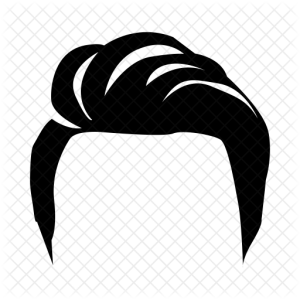 People from the hair transplant community always find the first hair transplant in Pakistan Price. hair transplant in Pakistan’s price is not much greater than in countries like the USA, Canada, France, and Australia. People from foreign countries that are familiar with Pakistan prefer Pakistan for hair transplants. This is due to the major difference between hair transplants in Pakistan cost, and price. Hair Transplant cost involves some factors: the number of Follicular grafts being transplanted, The number of surgical settings required an average of 2 to 3 sessions and the selection of hair transplant.
People from the hair transplant community always find the first hair transplant in Pakistan Price. hair transplant in Pakistan’s price is not much greater than in countries like the USA, Canada, France, and Australia. People from foreign countries that are familiar with Pakistan prefer Pakistan for hair transplants. This is due to the major difference between hair transplants in Pakistan cost, and price. Hair Transplant cost involves some factors: the number of Follicular grafts being transplanted, The number of surgical settings required an average of 2 to 3 sessions and the selection of hair transplant.
Hair transplant in Pakistan videos
People from the hair transplant community are also concerned about hair transplants in Pakistan videos for time estimation 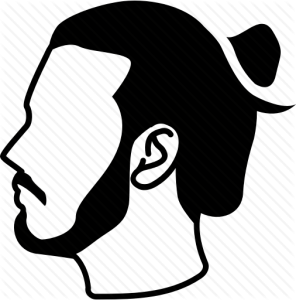 in hair transplantation. some people are viewing hair transplant videos for the process involved in hair transplant. but we recommend rather to see videos on the internet and contacting the doctors or specialists to get proper information. Sensible people always keep in mind that matters regarding these vary from case to case, and it is not possible to make sure to only view hair transplants in Pakistan videos. In videos not sure that the surgeon operating the patient is capable of doing a successful hair transplant. but we recommend that at least must come to our specialists to discuss everything.
in hair transplantation. some people are viewing hair transplant videos for the process involved in hair transplant. but we recommend rather to see videos on the internet and contacting the doctors or specialists to get proper information. Sensible people always keep in mind that matters regarding these vary from case to case, and it is not possible to make sure to only view hair transplants in Pakistan videos. In videos not sure that the surgeon operating the patient is capable of doing a successful hair transplant. but we recommend that at least must come to our specialists to discuss everything.
Hair Transplant in Pakistan reviews

Hair transplant in Pakistan is now not difficult. Experts are there to deal with hair transplants in Pakistan. Many men and women including major actresses and actresses are interested and solving their hair transplant problems. Normally the culture in foreign communities especially, people who are affected due to hair loss also give their reviews on social media. Although this culture is not always the practice in Pakistan people can get information about the reputation of doctors dealing in hair transplants in Pakistan. You can even different reviews to visit details Click here.
Hair transplant in Pakistan; Lahore, Islamabad, Faisalabad
Hair transplants in Pakistan are available in different cities of Pakistan like Islamabad, Lahore, and Faisalabad. The trend 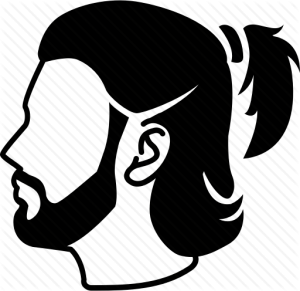 in hair transplants in Lahore, Islamabad, and Faisalabad, Pakistan is increasing. In Lahore and Islamabad, hair transplant specialists are available to provide facilities for hair transplants to the community of hair transplants in Lahore, Islamabad, and Faisalabad Pakistan.
in hair transplants in Lahore, Islamabad, and Faisalabad, Pakistan is increasing. In Lahore and Islamabad, hair transplant specialists are available to provide facilities for hair transplants to the community of hair transplants in Lahore, Islamabad, and Faisalabad Pakistan.
Hair Transplant
Hair transplantation is a surgical technique that removes hair follicles from one part of the body, called the ‘donor site’, to a bald or balding part of the body known as the ‘recipient site’. The technique is primarily used to treat male pattern baldness. In this minimally invasive procedure, grafts containing hair follicles that are genetically resistant to balding (like the back of the head) are transplanted to the bald scalp. Hair transplantation can also be used to restore eyelashes, eyebrows, beard hair, chest hair, pubic hair and to fill in scars caused by accidents or surgery such as face-lifts and previous hair transplants. Hair transplantation differs from skin grafting in that grafts contain almost all of the epidermis and dermis surrounding the hair follicle, and many tiny grafts are transplanted rather than a single strip of skin.
Since hair naturally grows in groupings of 1 to 4 hairs, current techniques harvest and transplant hair “follicular units” in their natural groupings. Thus modern hair transplantation can achieve a natural appearance by mimicking the original hair orientation. This hair transplant procedure is called follicular unit transplantation (FUT). Donor hair can be harvested in two different ways: strip harvesting, and follicular unit extraction (FUE).
Pre-operative assessment and planning
At an initial consultation, the surgeon analyzes the patient’s scalp, discusses their preferences and expectations, and advises them on the best approach (e.g. single vs. multiple sessions) and what results might reasonably be expected. Pre-operative folliscopy will help to know the actual existing density of hair so that postoperative results of newly transplanted hair grafts can be accurately assessed. Some patients may benefit from preoperative topical minoxidil application and vitamins.
For several days before surgery, the patient refrains from using any medicines which might result in intraoperative bleeding and resultant poor grafting. Alcohol and smoking can contribute to poor graft survival. Post-operative antibiotics are commonly prescribed to prevent wound or graft infections
Harvesting methods
Transplant operations are performed on an outpatient basis, with mild sedation (optional) and injected local anesthesia. The scalp is shampooed and then treated with an antibacterial agent before the donor scalp is harvested.
There are several different techniques for harvesting hair follicles, each with its advantages and disadvantages. Regardless of the harvesting technique, proper extraction of the hair follicle is paramount to ensure the viability of the transplanted hair and avoid transection, the cutting of the hair shaft from the hair follicle. Hair follicles grow at a slight angle to the skin’s surface, so transplanted tissue must be removed at a corresponding angle.
There are two main ways in which donor grafts are extracted today: strip excision harvesting, and follicular unit extraction.
Strip harvesting
Strip harvesting (also known as follicular unit transplantation or FUT) is the most common technique for removing hair and follicles from a donor site. The surgeon harvests a strip of skin from the posterior scalp, in an area of good hair growth. A single–, double–, or triple-bladed scalpel is used to remove strips of hair-bearing tissue from the donor site. Each incision is planned so that intact hair follicles are removed. The excised strip is about 1–1.5 x 15–30 cm in size. While closing the resulting wound, assistants begin to dissect individual follicular unit grafts, which are small, naturally formed groupings of hair follicles, from the strip. Working with binocular Stereo-microscopes, they carefully remove excess fibrous and fatty tissue while trying to avoid damage to the follicular cells that will be used for grafting. The latest method of closure is called ‘Trichophytic closure’ which results in much finer scars at the donor area.
The surgeon then uses very small microblades or fine needles to puncture the sites for receiving the grafts, placing them in a predetermined density and pattern, and consistently angling the wounds to promote a realistic hair pattern. The technicians generally do the final part of the procedure, inserting the individual grafts in place.
Strip harvesting will leave a thin linear scar in the donor area, which is typically covered by a patient’s hair even at relatively short lengths. The recovery period is around 2 weeks and will require the stitches/staples to be removed by medical personnel or sub-cuticular suturing can be done.
Follicular unit extraction (FUE)
With Follicular Unit Extraction or FUE harvesting, individual follicular units containing 1 to 4 hairs are removed under local anesthesia; this micro removal typically uses tiny punches of between 0.6mm and 1.0mm in diameter. The surgeon then uses very small microblades or fine needles to puncture the sites for receiving the grafts, placing them in a predetermined density and pattern, and consistently angling the wounds to promote a realistic hair pattern. The technicians generally do the final part of the procedure, inserting the individual grafts in place.
FUE takes place in a single long session or multiple small sessions. The FUE procedure is more time-consuming than strip surgery. An FUE surgery time varies according to the surgeons’ experience, speed in harvesting, and patient characteristics. The procedure can take anywhere from a couple of hours to extract 200 grafts for scar correction to surgery over two consecutive days for a mega-session of 2,500 to 3,000 grafts. With the FUE Hair Transplant procedure, there are restrictions on patient candidacy. Clients are selected for FUE based on a Fox test, though there is some debate about the usefulness of this in screening clients for FUE.
FUE can give very natural results. The advantage over strip harvesting is that FUE harvesting negates the need for large areas of scalp tissue to be harvested, so there is no linear incision on the back of the head and it doesn’t leave a linear scar. Because individual follicles are removed, only small, punctate scars remain which are virtually not visible and any post-surgical pain and discomfort is minimized. As no suture removal is required, recovery from Micro Grafting FUE is less than 7 days.
Disadvantages include increased surgical times and higher costs to the patient. It is challenging for new surgeons because the procedure is physically demanding and the learning curve to acquire the skills necessary is lengthy and tough. Some surgeons note that FUE can lead to a lower ratio of successfully transplanted follicles as compared to strip harvesting.
Follicular unit transplant
Follicular unit transplantation (FUT) is the traditional hair transplant method which involves extracting a linear strip of hair-bearing skin from the back or the side of the scalp. The strip is then dissected to separate individual grafts.
Robotic hair restoration
Robotic hair restoration devices utilize cameras and robotic arms to assist the surgeon with the FUE procedure. In 2009, NeoGraft became the first robotic surgical device FDA-approved for hair restoration. The ARTAS System was FDA-approved in 2011 for use in harvesting follicular units from brown-haired and black-haired men.
Types of Surgery
There are several applications for hair transplant surgery, including:
- Androgenetic alopecia
- Eyebrow transplant
- Frontal hairline lowering or reconstruction (naturally high hairlines without an existing hair loss condition)
If donor hair numbers from the back of the head are insufficient, it is possible to perform body hair transplantation (BHT) on appropriate candidates who have available donor hair on the chest, back, shoulders, torso, and/or legs. Body hair transplant surgery can only be performed by the FUE harvesting method and, so, requires the skills of an experienced FUE surgeon. However, there are several factors for a potential BHT candidate to consider before surgery. These include understanding the natural difference in textural characteristics between body hair and scalp hair, growth rates, and having realistic expectations about the results of BHT surgery.
Post-operative care
Advances in wound care allow for semi-permeable dressing, which allows seepage of blood and tissue fluid, to be applied and changed at least daily. The vulnerable recipient area must be shielded from the sun, and shampooing is started two days after the surgery. Some surgeons will have the patient shampoo the day after surgery. Shampooing is important to prevent scabs from forming around the hair shaft. Scabs adhere to the hair shaft and increase the risk of losing newly transplanted hair follicles during the first 7 to 10 days post-op.
During the first ten days, some of the transplanted hairs, inevitably traumatized by their relocation, may fall out. This is referred to as “shock loss”. After two to three months new hair will begin to grow from the moved follicles. The patient’s hair will grow normally, and continue to thicken through the next six to nine months. Any subsequent hair loss is likely to be only from untreated areas. Some patients elect to use medications to retard such loss, while others plan a subsequent transplant procedure to deal with this eventuality.

